ASTROLOGY AND KING ARTHUR
ASTROLOGY AND KING ARTHUR
By RALPH ELLIS
My research has lead me to believe that the ancient Egypto-Judaic priesthood were guardians of the Day Book, the diary and biography of the royal dynasties of the Egypto-Judaeans, and to track those dynasties and the many momentous events in their lives they used precessional astronomy to shape their chronological framework. (See related article)
However our knowledge of precessional astronomy was nearly exterminated in AD 70, when Jerusalem was destroyed by the Romans. So, if a knowledge of precession was to survive, then these ancient traditions would have to be relocated elsewhere, and if necessary go underground. So where did they go to?
Surprisingly, it is my contention that many of these ancient traditions were transferred to England, where they became the foundation for the many mythologies that underpin the legends of King Arthur. It matters not at this stage whether King Arthur was a real person or not, as we are only looking here at the traditions and symbolism that surround this famous monarch. The identification of King Arthur in the historical record is another matter entirely, although the book King Jesus did come up with some rather startling evidence as to who King Arthur really was.
So in what manner is the precessional zodiac related to the legends of King Arthur? Well, it would seem that the historical and mythical thread for the zodiac is interwoven into the legends of the Arthurian Round Table, as narrated in the Vulgate Cycle – that enormous but turgid and impenetrable corpus of Arthurian legend that is known for its soporific effects.
Within this great Arthurian library there are many accounts of the Round Table and one of them, in the Quest for the Holy Grail, says that the original Round Table was actually the Last Supper Table of Jesus and his twelve disciples. So Leonardo da Vinci may have been wrong in his famous depiction, for it is likely that his much debated fresco should have depicted a circular table.
The Quest for the Holy Grail goes on to say that Joseph of Arimathaea took many of the rituals of the Nazarene creed, including the traditions of the Last Supper Round Table, to England after the ‘storm of persecution’ against the Christians (nee Nazarenes) in Judaea. (This is how William of Malmesbury terms it.) But surely that ‘storm of persecution’ just has to be a reference to the aftermath of the Jewish Revolt in AD 70, the very same revolt that the king of Edessa was waging against the Romans.
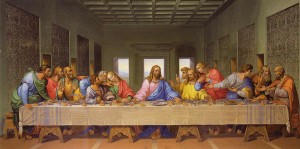
Fig 5.1 The Last Supper painting by Giacomo Raffaelli, a copy of Leonardo da Vinci’s famous Last Supper mural. In reality this table was a round Arthurian-style table.
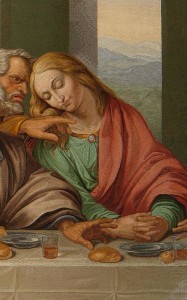
Fig 5.2 A detail from Raffaelli’s Last Supper showing ‘St John’. Clearly this St John is decidedly female (even more so than in Leonardo da Vinci’s original version) and she is wearing orange and green robes, and so this is actually an image of the golden-haired Mary Magdalene, the wife of Jesus who is seated next to him in the position of his primary disciple. And since this particular painting was commissioned by Napoleon, it is also clear that a great number of influential people down through the ages have known about this fact, but decided to surround this troublesome detail with enigma and intrigue, rather than honesty and openness. It is difficult to explain why Napoleon would be so coy, being the powerful dictator that he was, but perhaps he thought that open acknowledgement of Jesus’ marriage might cause strife among the ignorant and superstitious proletariat.
So there are three Round Tables in this great history of Arthurian legend. This tabular lineage begins with the famous table of the Last Supper, where Jesus broke bread with his twelve disciples. The second table in this lineage was the table of Joseph of Arimathaea, which was fabricated in England at some time during the first century AD, presumably after the Jewish Revolt in AD 70. And in a similar fashion to Jesus at the Last Supper, Joseph placed either 12 or perhaps even 24 disciples around his Round Table (because Joseph wanted to be twice as great as Jesus).
Then we come to the third of these influential tables, the equally famous table of the Grail – the famous Round Table of Arthurian legend. And, just as one might expect from an ancient tradition of this nature, King Arthur also chose to surround himself with twelve knights (or disciples), in a direct imitation of Jesus’ Last Supper table. A 13th century copy of this Arthurian table is still to be found in the Great Hall at Winchester, and just like Joseph(us)’s Round Table this table also has spaces reserved for 24 knights. The Arthur figure on this table has been repainted in the 16th century to show an image of King Henry VIII, but do remember that Henry’s late brother was called Arthur.
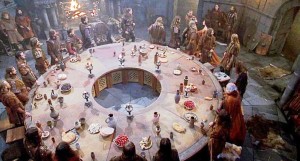
Fig 5.3 King Arthur and the Round Table. In this image, there is an empty space in the center of the table, but in reality it should have been occupied by Arthur/Jesus figure as the Sun (of) God, just as can be seen in the Hamat Teverya zodiac below. So Jesus/Arthur would not simply have been at the center of his court, he would also have been seated at the center of his table
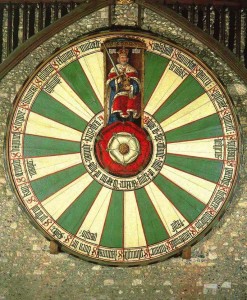
Fig 5.4 The Round Table at Winchester, constructed in about the 13th century. This table has positions for 24 knights/disciples, instead of 12.
The Arthur figure on this table has been repainted in the 16th century to show an image of King Henry VIII. But do remember that Henry’s late brother was called Arthur
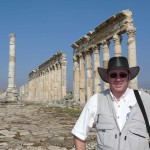
About the Author:
Ralph Ellis is author of Cleopatra to Christ, King Jesus, Mary Magdalene, Princess of Orange. All are available on iPad, Kindle, or Nook. Paperback copies available from Adventures Unlimited of Illinois. See: http://www.edfu-books.com/
